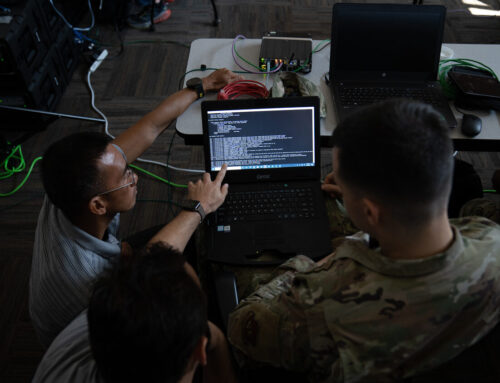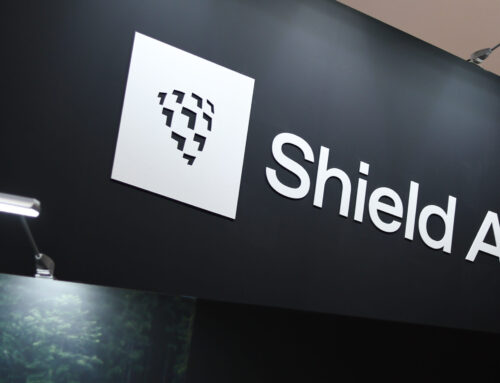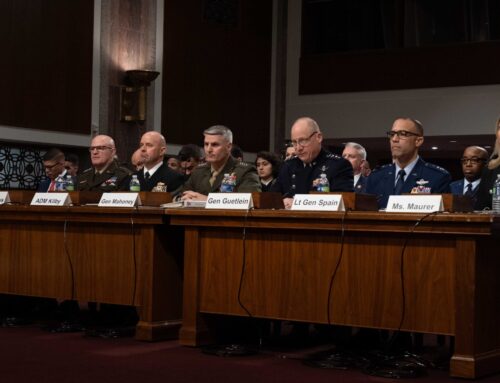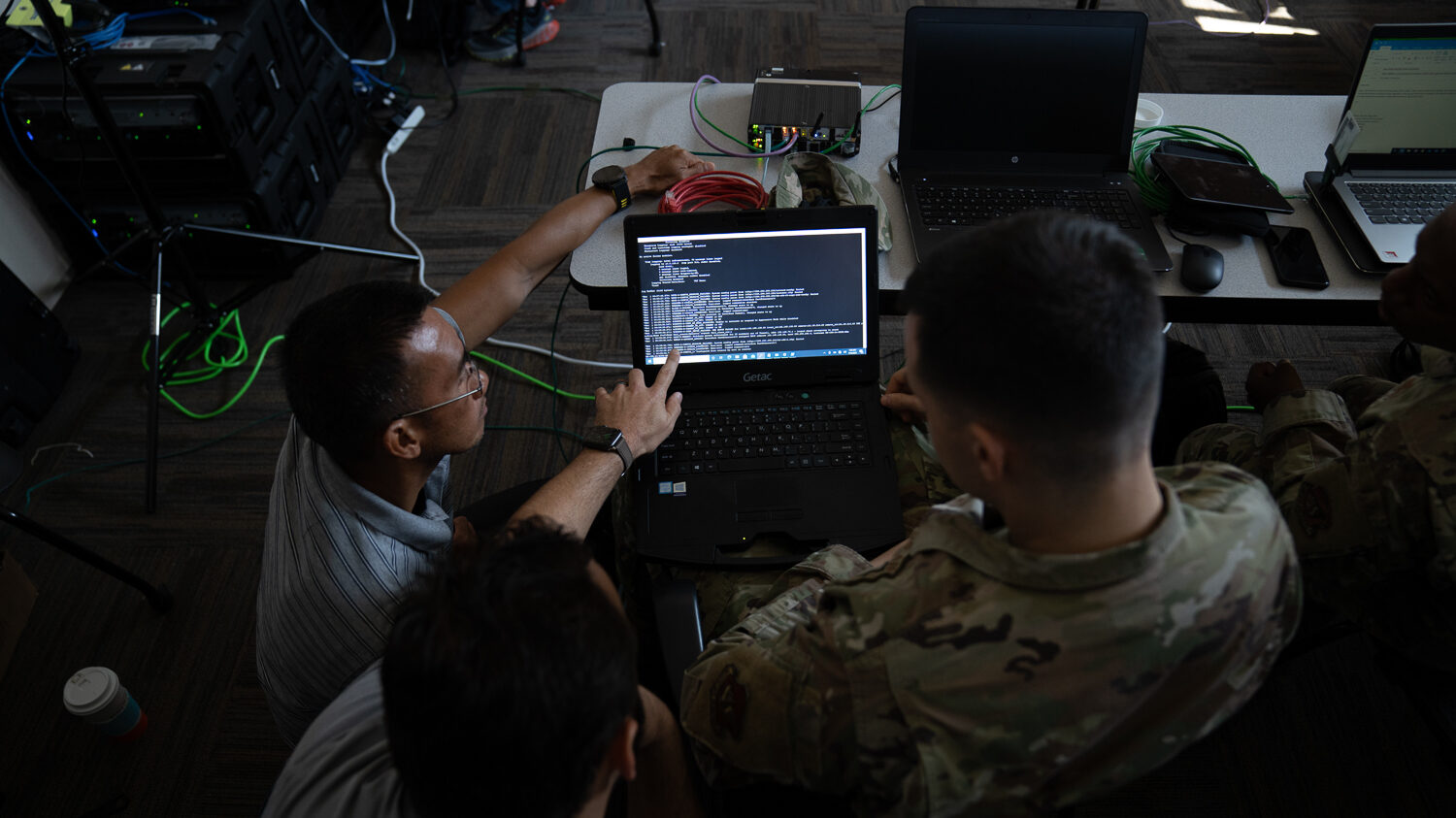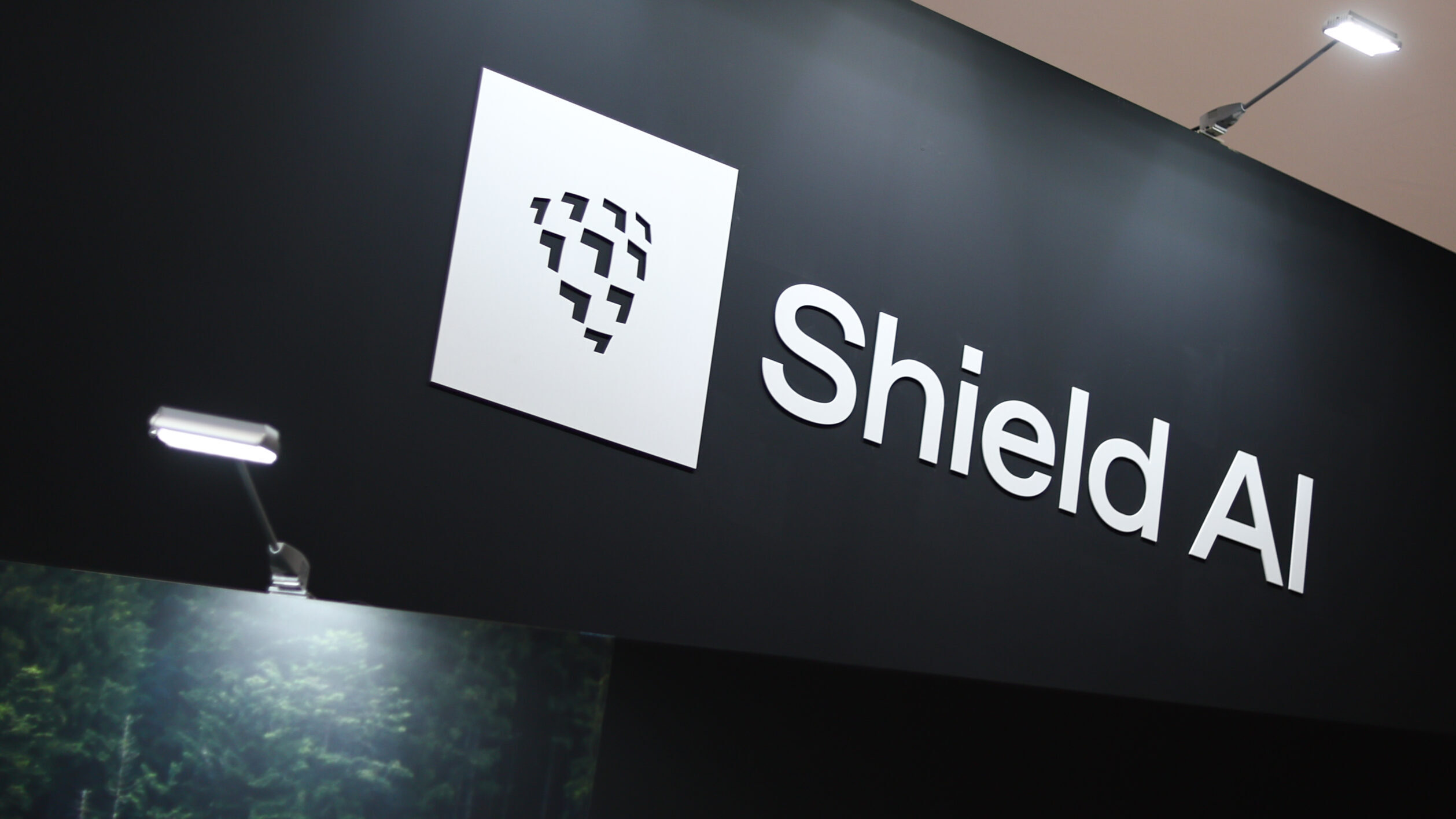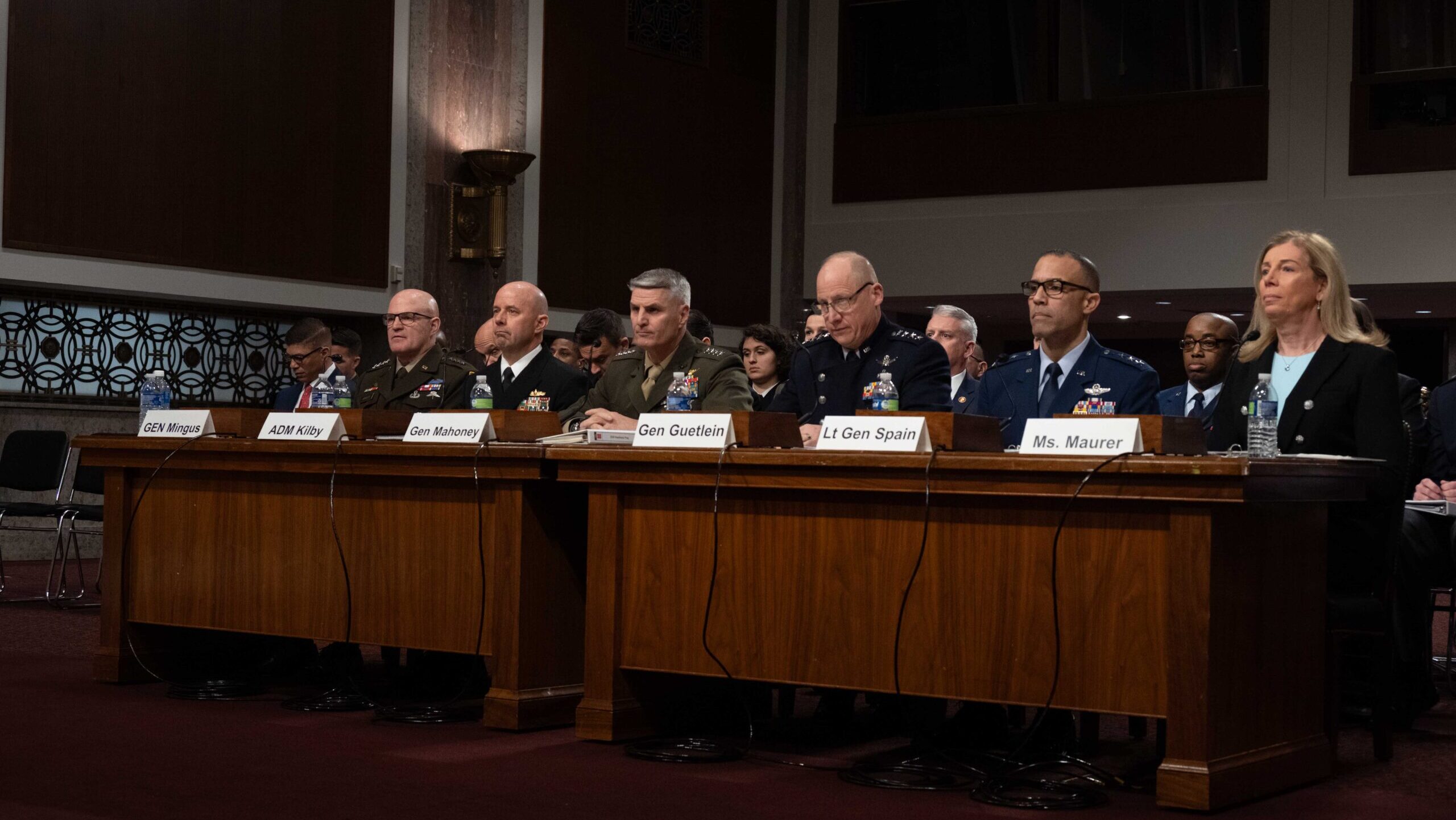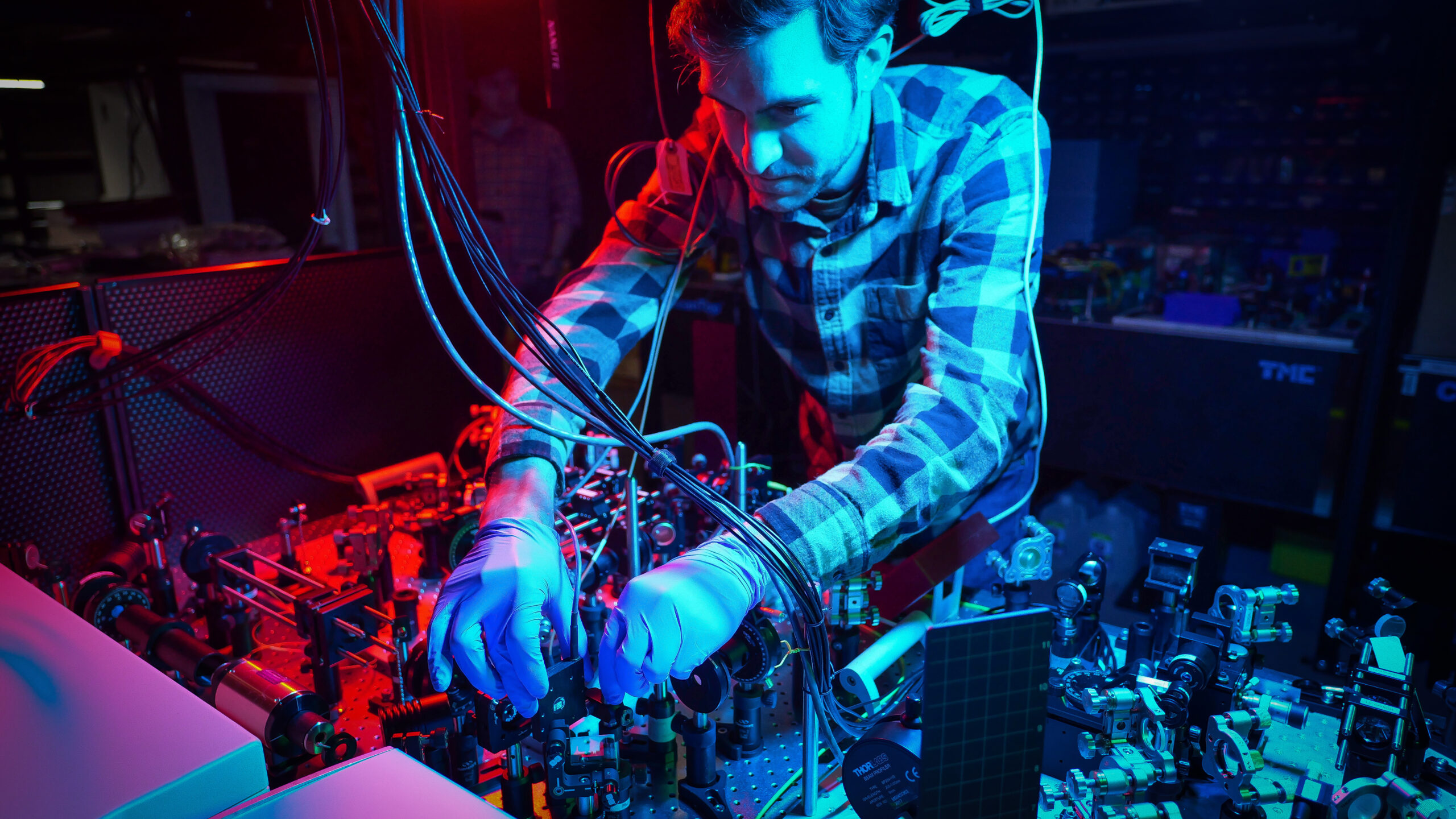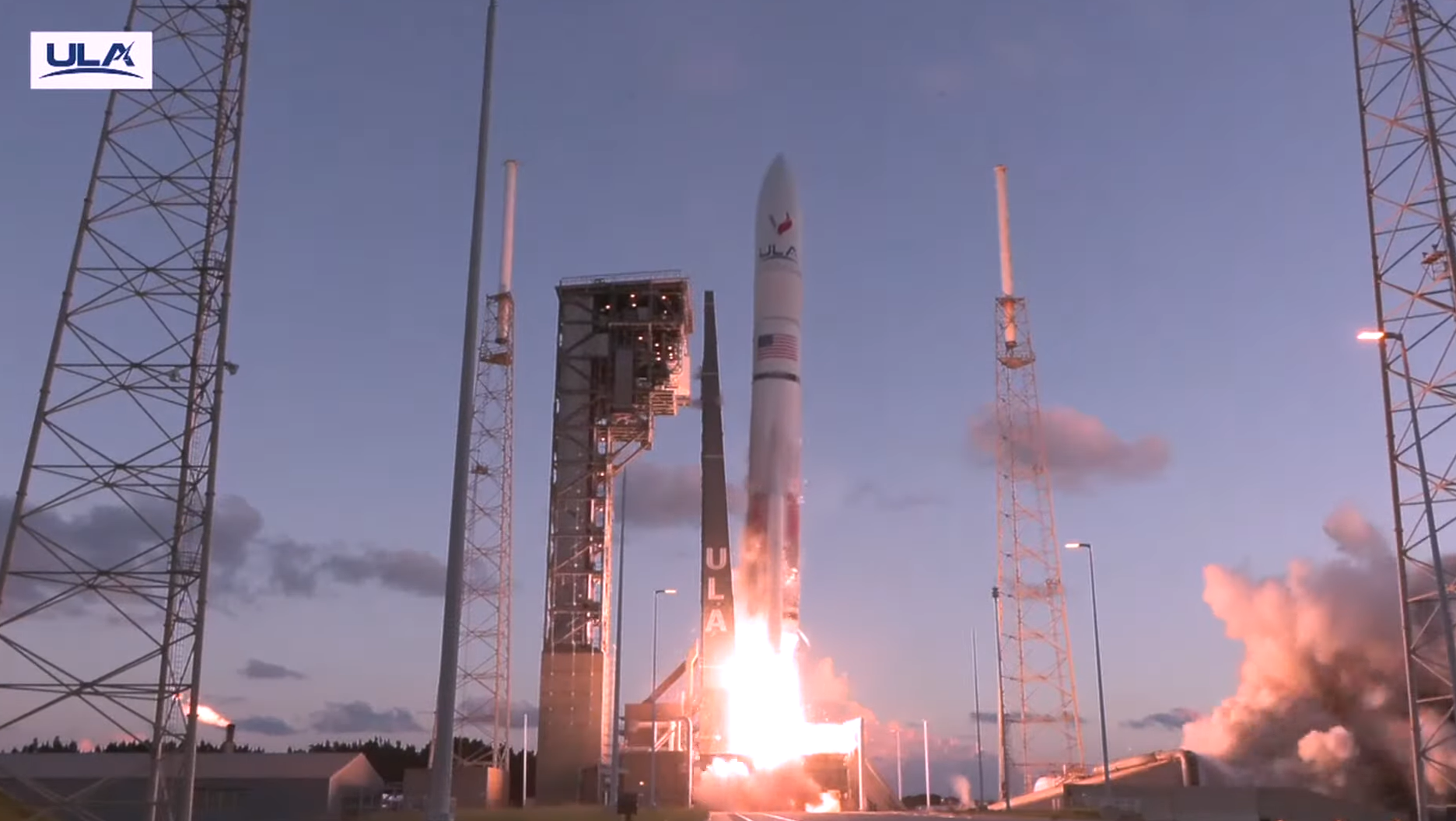Assistant Minister for Defence Matt Thistlethwaite, speaks at the 82nd anniversary of the Bombing of Darwin, held at the Darwin Convention Centre, Darwin. (Australia MoD)
NATO SUMMIT 2024 — As top delegations from the 32-member NATO alliance gather in Washington, DC, this week, they’re joined by senior officials from several non-member nations that nonetheless maintain very close ties to the alliance, including partner nation Australia.
Matt Thistlethwaite, Australia’s assistant minister for defense, plays a key role in making sure the logistics for the AUKUS trilateral security pact stay on track. While in Washington for the NATO Summit, he talked with Breaking Defense about the message the Australian delegation brought to town, how the ITAR situation is shaking out, and basing plans for the Lucky Country’s future subs.
This transcript has been lightly edited for length and clarity.
BREAKING DEFENSE: You’re meeting with American lawmakers, from both parties, and Biden administration officials during the NATO Summit. There’s at least some concern that under a new administration and Congress that AUKUS might lose some steam.
THISTLETHWAITE: We’re confident that regardless of who occupies the White House, the alliance will continue to go from strength to strength, and I’ve been bolstered by the conversations that I’ve had with congressmen and -women yesterday from both sides of the aisle about their support for AUKUS.
They see the strategic importance of it for security and peace in the Indo-Pacific, but they also see the industrial uplift that will come from Pillar II, and that means jobs in their districts. It means investment for small businesses, and it means supply chain security. So I think that both of our nations are going to benefit from the industrial capacity that will derive from AUKUS as well as the security uplift as well.
Do you think that message is being received?
The people that I spoke to yesterday all understood it, were all supportive, and all said, regardless of what happens come November, that support for AUKUS will be maintained in the Congress and that the plan will continue. That gives us a lot of confidence, and it means that, now that the legislative [ITAR] reform has been undertaken here, it’s happening in Australia that we can start planning that industrial capacity as well as the skills development of industry as well. That’s going to be crucial. And we’re going to need to train more engineers, more scientists, more trades people to deliver the increased number of boats here, and then, eventually, the manufacturing capacity in Australia.
RELATED: NATO summit to have distinctly Indo-Pacific tinge, as Europe looks to China challenge
When will the State Department certify that Australia meets the requirements for creating a system that is equivalent to the US ITAR system? What’s your sense on where that is?
We’re hopeful that it’ll be concluded before the end of this year, and that that will then open up that opportunity for trade and that opportunity for skills and technology transfer that will be crucially important to developing the industrial base in Australia.
Are you at all concerned about that date? The end of the year is fast approaching, and obviously the US election is coming up.
So I think that — yeah, if we can, if we could see it sooner, from our end then we’d be very grateful for that. But we also understand the issues in your Congress with an election later in the year. So the sense is, it’s more just a matter of if there’s other priorities, Congress is distracted, if there’s not any real hang-ups there.
There was some question in Parliament recently about the $5 billion payment to the US to bolster the sub industrial base, and what would happen if the AUKUS deal for Virginia-class subs falls apart. What would happen to that money? Is that actually a concern at all?
There’s been no indication at all to us that the Virginia classes aren’t going to be delivered. So we’re working on the assumption that we will acquire that capability from 2027. The planning is in place, including, importantly, the people transfer. So the deployments of US submariners, all that planning is starting to take place already. So there’s been no indication at all that that commitment won’t be met.
How confident are you that the basing plan in place right now is going to work out, that the infrastructure will be in place in time?
We’re confident because the work’s already started. So the extension of wharves in fleet based West is been approved and started to take place. The upgrades to the power, water, sewage infrastructure that will facilitate the maintenance of nuclear-propelled submarines and security upgrades. They’re all planned. The accommodation, both on base and off base, that will house the Marine rotational force that’s been planned.
We’ve got a body called Defense Housing Australia. They’ve just gone out to the market for a tender to build 550 homes around the base for submariners and their families, and the response to the tender has been great. There’s been 10 corporations that have said we want to be involved in this, and we want to work on it. So we’re pretty confident, and we’re working at speed to deliver that infrastructure that’s going to be necessary to cater for it into the future.



